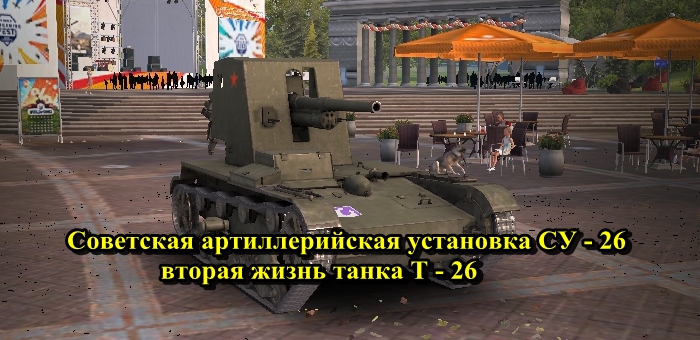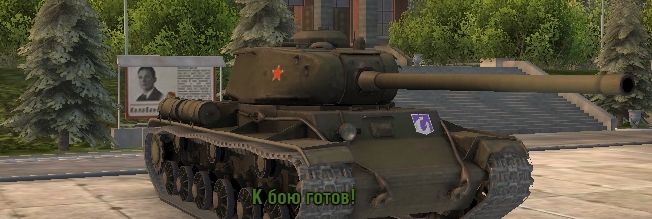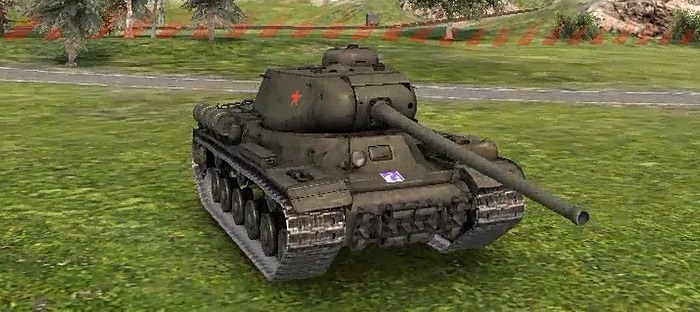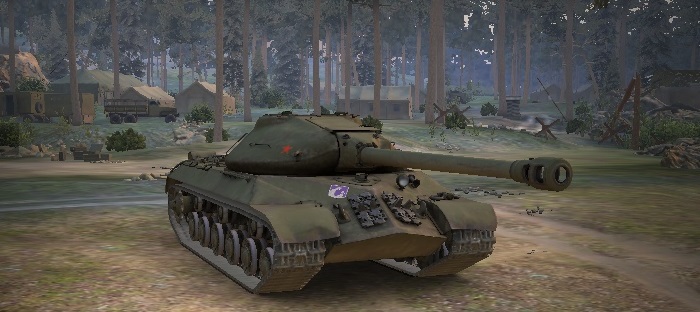The Soviet self-propelled artillery unit SU-26 was developed in besieged Leningrad. It was designed on the basis of the T-26 light tank in the fall of 1941. They made equipment at the Kirov hoisting-and-transport equipment plant. 12 chassis were redesigned, on which 76.2 mm guns were installed (presumably 76.2 mm regimental guns, model 1927). Machines entered service with tank brigades of the Red Army. The created equipment took hostilities on the Leningrad front and was operated until 1944.
In the mid 1930s The idea of installing more powerful artillery weapons on the chassis of the T-26 tank was realized. Due to the need for superiority over enemy tanks. The following self-propelled artillery self-propelled guns were designed: SU-1, SU-5, SU-6 and AT-1. None of them reached the large-scale release, but this story continued throughout the war years.

In the first months of the summer of 1941, repair enterprises and tank factories received a significant amount of light T-26 tanks. The tanks were with different injuries and varying degrees of severity. When new German medium tanks Pz.III and Pz.IV appeared at the front, the Soviet T-26 light tank became uncompetitive. T-26 tanks began to be adapted for other purposes, such as evacuation and repair vehicles. As well as self-propelled artillery mounts.

For alteration from the T-26 tank to a self-propelled artillery installation, a tower was dismantled, and a larger gun was installed in its place. The initiator of their creation was the Military Council of the Leningrad Front. Which applied to the NKTP about the possibility of re-equipping the BT and T-26 tanks with a 76.2-mm CT gun. Already in October of that year, light self-propelled guns based on the T-26 tank were manufactured and tested at factory No. 174. The tests were satisfactory. According to the test results, the Military Council of the Leningrad Front ordered the plant number 174 to establish the release of these self-propelled guns.

The basis for the self-propelled artillery was the same repair-suitable T-26. They removed the turret, and instead installed a 37 mm anti-tank gun or a 76.2 mm regimental cannon arr. 1927. The gun was closed with an armor shield and had a circular firing sector. According to the documents, they passed under different names: SU-T-26, T-26-SU, SU-26, or simply as SU-76.

About 14 tanks were converted from T-26 tanks to self-propelled artillery SU-26. The 124th Tank Brigade and the 220th Tank Brigade were equipped or had at their disposal. January 12, 1942 received at its disposal “3 76-mm guns on self-propelled guns T-26.” February 20, 1942, during an attack by the 124th tank brigade of German positions in the Vinyagolovo area, 2 self-propelled guns on a T-26 chassis with 76 and 37 mm guns were shot down and burned. 76 mm installations based on the T-26 were part of the 220th tank brigade. As of May 17, 1942, it had 4 self-propelled artillery mounts Su-26. Self-propelled artillery mounts SU-26 were in operation until 1944. Since 1943, this self-propelled gun was renamed SU-76P (“regimental”), so that there would be no confusion with the new production vehicle under the same index.

In the world of tanks, the Soviet self-propelled artillery unit SU-26 is at level 3. SU-26 has an excellent rate of fire and accuracy by the standards of self-propelled guns. At the same time, the shells have a small radius of fragmentation and damage. But it is precisely for the rate of fire and accuracy that is highly valued in junior and medium company battles. And also in some tournament formats. Almost the only self-propelled gun capable of withstanding light tanks. The total turning speed of the turret and chassis is sufficient to keep the tank circling nearby on the sight.
Initial guns have a short range of fire stock guns 76 mm regimental gun arr. 1927 and 76 mm gun arr. 1902/30 g. 30 CLB. With the support of the Allied offensive, one must follow them at a distance of effective destruction of enemy tanks. Remember that with short-barreled artillery the projectile flies very slowly. 76 mm gun arr. 1902/30, 40 klb already allows you to shoot almost the entire map, the projectile speed is noticeably higher.








